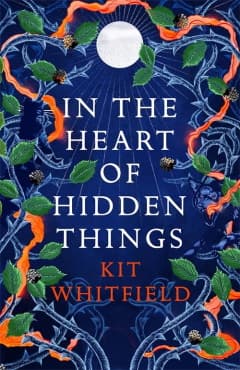
In The Heart of Hidden Things by Kit Whitfield
(Jo Fletcher Books, 2022)
Reviewed by Dave M. Roberts
Kit Whitfield’s previous novels took an interesting and different approach to very familiar fantasy tropes, dealing with the werewolf and mermaid myths. Some thirteen years since her previous novel, In The Heart of Hidden Things takes on the realm of faerie, or The People as they are referred to. More accurately, it deals with the lives of the ordinary people who have to live on the edges of their realm and cope with the unpredictable behaviour. The story is centred on the Smiths, the Fairy-smiths of the village, much of whose trade is concerned with containing The People in the forests, deterring them from their human interactions. Even when The People take a liking to someone, their behaviour can be disconcerting, such as changing all the milk and butter blue or either messing or tidying up people’s homes, depending on how they find them.
On the edge of the land live the Ware family. Their young son Toby was touched at an early age by the fey dog Black Hal. As a result, he is unable to communicate directly with his family, and is drawn to the forest and open spaces. This causes problems as it means he regularly trespasses on the land that belongs to the local landowners, which could see him hanged. The local families do their best to cover for him, but what they can do clearly has its limitations. The Smiths work to help contain him, but what they can do is limited and young Toby tends to panic at the touch of iron, and any attempt to fence him in. Sympathy from the landowners such as Ephraim Brady is practically non-existent. The Smiths have to work almost as hard at manipulating and foiling the landowners as they do with The People. There is a real parallel between The People and Ephraim Brady and his ilk. Both do things that are largely incomprehensible to the villagers, and often the worst of their behaviour is hidden. The signs are only clear to those who look for them and are able to extrapolate from those signs to understand the possible consequences. In many ways, this is exactly what the Smiths do in the way that the People are controlled. They often have to work to keep people from situations they do not realise they need rescuing from.
John, the youngest of the three generations of Smiths also appears to have a touch of The People about him. This is usually exhibited in his rash and ill-thought-out actions, which his father and grandfather would have realised could have serious consequences. However, he also seems to have a knack of communicating with the fey. Such as persuading a particularly chatty cat to keep quiet, avoiding the frequent response to evidence of the fey, which would be to drown it. His apprenticeship is tightly controlled because of this, and his maturing and growth to understanding of his responsibilities slowly become central to the story.
This is another intelligent fantasy from Kit Whitfield, in which the fey elements are handled so deftly that they become a part of the background of the novel, rather than being entirely central. It allows the story of the Smiths and the other villagers proper breathing space so that their trials and tribulations are central, not the supernatural. Which is as it should be, as The People are not supernatural in this world, they are simply a part of it and just another thing that has to be dealt with. This is a touching novel, tackling neurodivergent children and the affect they have on those that love and care for them, with a great deal of understanding. It also effectively captures the tensions caused by the callousness of Brady, resulting in a very gripping read. The only real flaw for me is that the epilogue has a lot of story packed into it, much of which would have benefited greatly from being expanded.
Review from BSFA Review 19 - Download your copy here.
